Super Consumer Pulse Wave 0: Results from our pilot national consumer survey

Super Consumers Australia is establishing an annual nationally representative survey of Australians to inform our advocacy for a better super system. The survey will look at core topics related to super including consumer behaviour and choice; Australians’ attitudes and expectations of the super system; and how well people understand their super.
To develop our methodology and fine-tune the questions we ask, we undertook a pilot, or ‘benchmark’, survey – we are calling this ‘Wave 0’ of the Super Consumer Pulse. We are releasing findings from Wave 0 as it contains insightful data on issues important to consumers. In this blog post, we will share some key insights from our survey.
Methodology
Our survey was conducted via an online survey provider, the Online Research Unit, with a sample size of 1,572 respondents. Responses were received between 25 October 2022 and 3 November 2022 and have been collected and weighted to be nationally representative. More details about our methodology can be found in the technical notes at the end of this blogpost.
Our survey was structured in 4 main sections:
- Screening and demographics, presented to the whole sample. This section gives us a detailed look at the demographic and socio-economic context to our participants.
- Consumer choice and behaviour, presented to people with a super fund in the accumulation phase. This section focuses on how people behave and engage in the super sector, looking at account-level statistics and decision-making behaviour.
- Attitudes and expectations, presented to the whole sample. This section measures people’s expectations of the super system and tries to understand their personal views and confidence levels.
- Knowledge, presented to the whole sample. This section, based off similar questions in the Productivity Commission’s 2018 survey of super fund members, tests the extent to which people understand and know about key characteristics of the super system.
Findings and Discussion
Our Sample
Our sample was made up of 1,572 respondents broadly representative of the population on the basis of age, gender, income, location and education.1 Weighting has been applied where possible to ensure results are indicative of the general population.
A brief demographic breakdown of our sample is shown below. Detailed descriptive statistics can be found at the end of this blogpost.
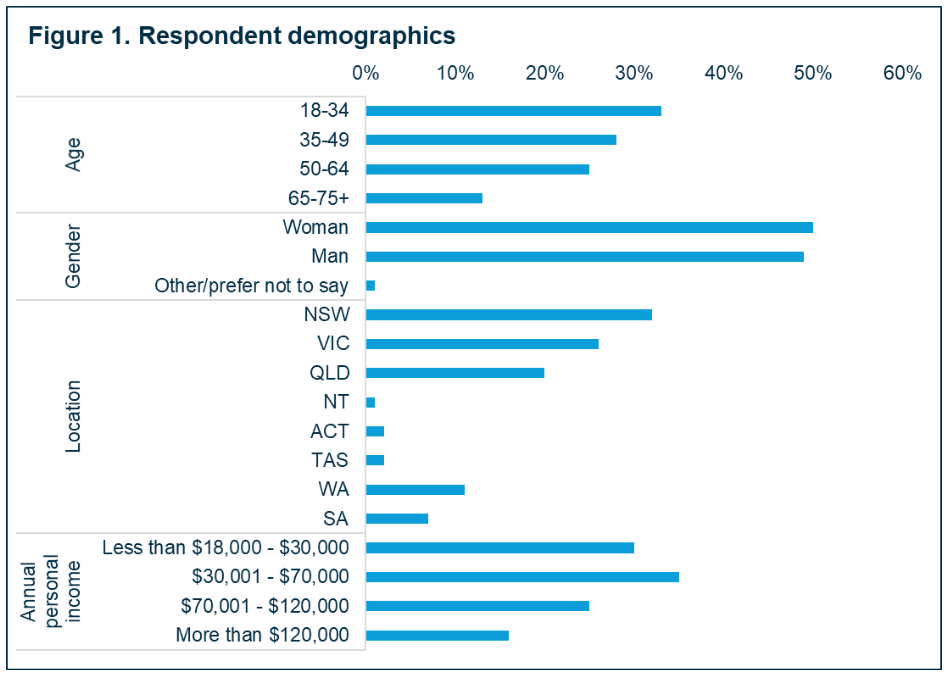
Consumer Behaviour and Choices
Most people who had super with a fund (83%) had just one super account. This is 6 percentage points higher than 2018 data published by the Productivity Commission.2 4% of people in our survey weren’t sure how many separate accounts they had; data on the number of people who weren’t sure about the number of accounts held was not published by the Productivity Commission, so these results should be compared with caution.
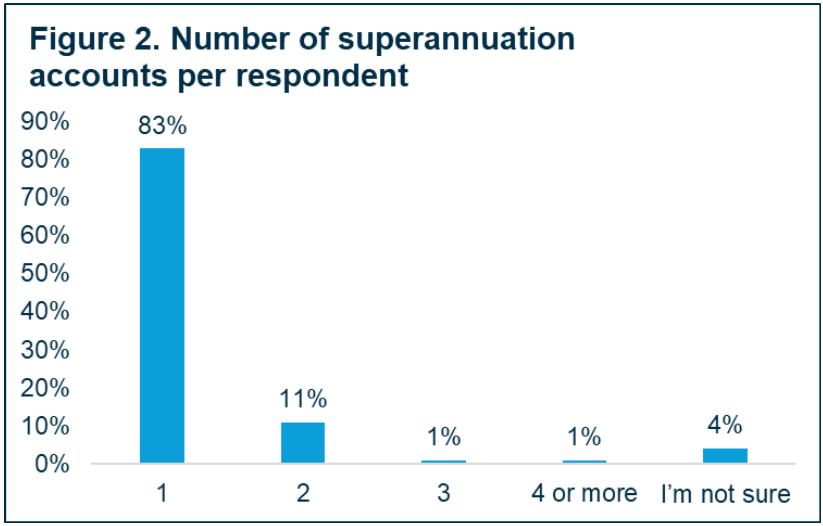
Question: How many super accounts do you currently have? Include any accounts you have left over from previous jobs that might still have money in them. n=1,181
More than half of people who had super with a fund were in an employer’s default. This is notably higher than 2018 Productivity Commission data, which found that 44% of fund members were a passively acquired (i.e. employer-selected) super fund.
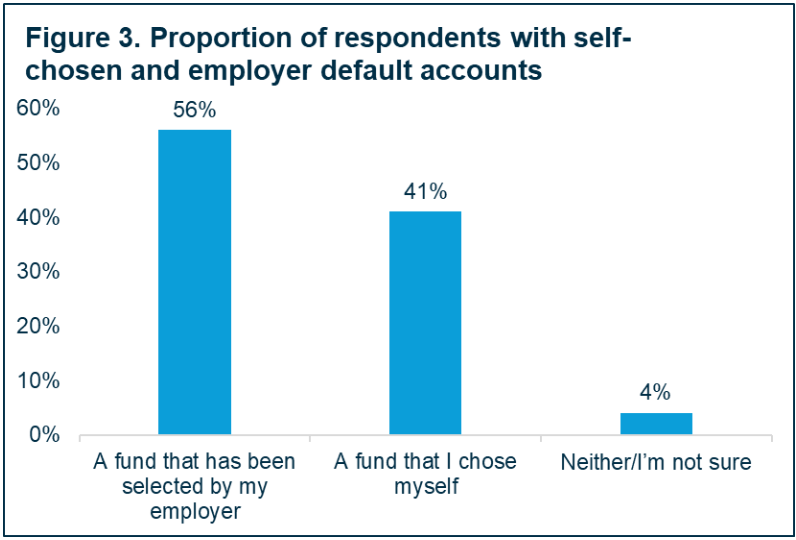
Question: Could you tell which of these types of super accounts you have? n=1,181
More than half of people with a fund had combined their super, and 14% of them had changed funds in the past 2 years. Changing employers was the most common reason for the switch, which is consistent with other data on switching behaviours.3
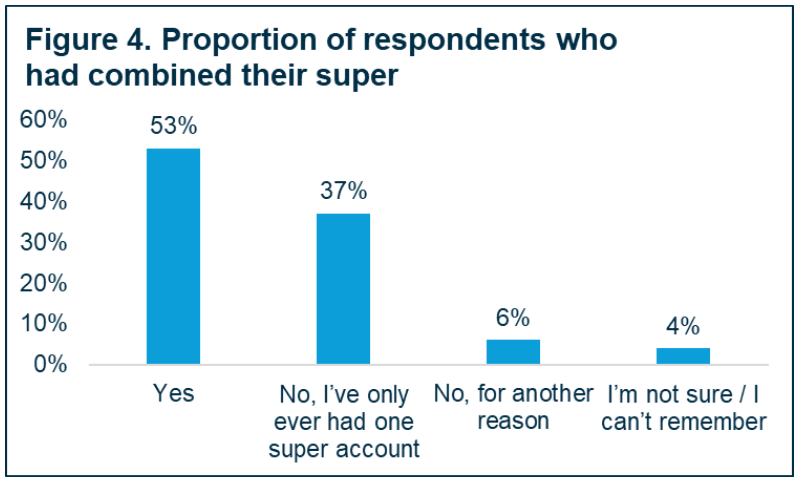
Question: And have you ever tried to combine all of your super into one single account? n=1,181
1 in 10 people (11%) hadn’t changed their super funds because it was too complicated, and another 1 in 10 (11%) hadn’t changed because it was too hard to find a good super fund. These figures are indicative that market complexity and difficulty sourcing information about super funds is undermining consumer choice in the market.
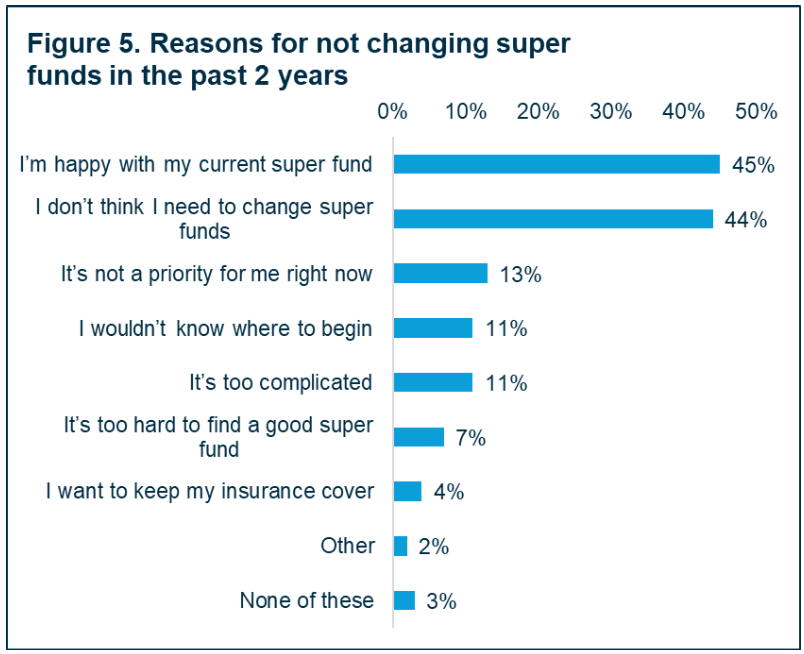
Question: Why haven’t you changed super funds in the past 2 years? n=1,005
1 in 5 people (19%) with super didn’t know whether they had insurance with it. For those that did, around half of them knew what they were covered for (51%) and how much it cost them (54%). Full time workers were more engaged with the insurance they had with their super, as they were more likely to report knowing which kinds of insurance they had, how much it cost, and what it covered.
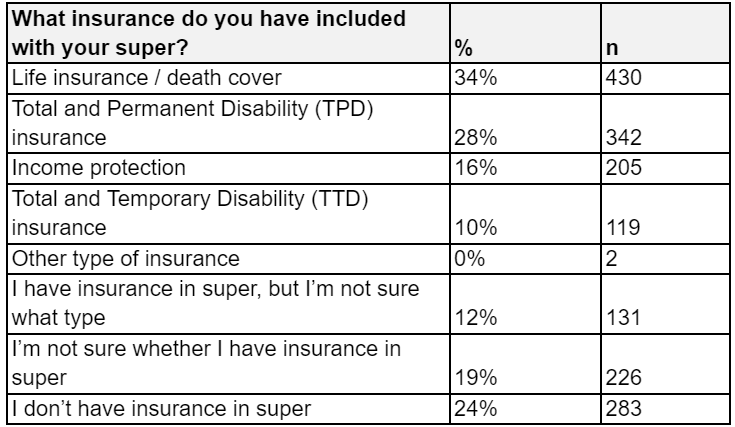
People in a fund they chose themselves were much more likely to have engaged with insurance in super. 19% had changed their level of insurance and 11% had opted out of insurance altogether, compared to 10% and 8% of people in an employer’s default fund respectively.
There was big variation in the extent to which respondents were engaged with their super, and confident navigating the market. For the majority of people who had super (62%), it gave them peace of mind for the future. However, confidence in the retirement system overall was mixed – less than half of people were confident that they would have enough super to last their retirement (42%), or that the age pension would be enough if they ran out of super (43%).

Question: And have you ever done any of the following? n=1,181
* = statistical significance.
Two thirds of people kept an eye on how much money was in their super, and about half read communications their funds send them.
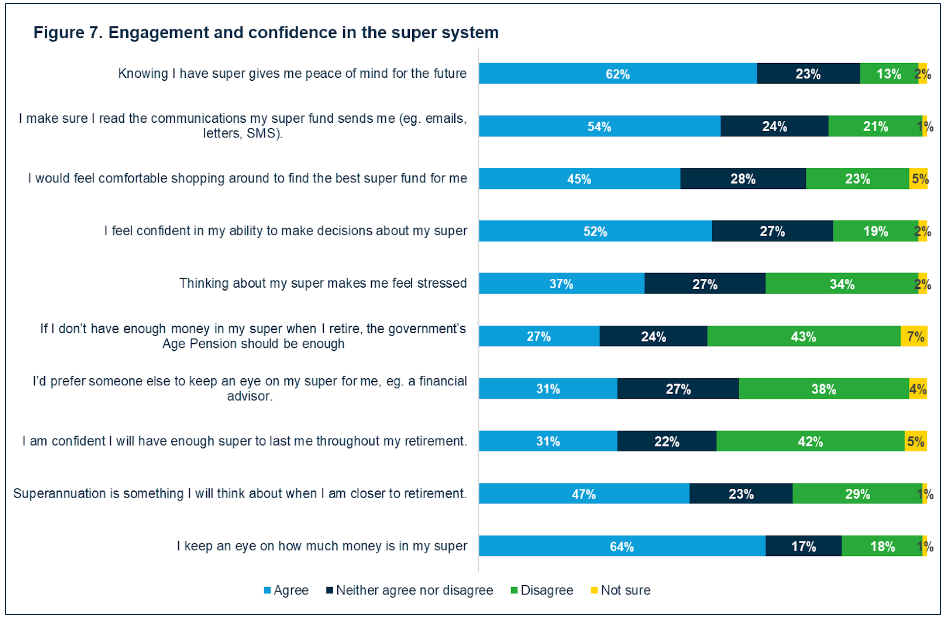
Question: We are going to list a series of statements. Please tell us to what extent you agree or disagree. n=1,181
For all participants in our survey, fees and charges were by far one of the most important things that would influence their choice if they had to pick a new super fund (67%), followed by the fund’s past performance (52%), and ease of investment choice (36%).
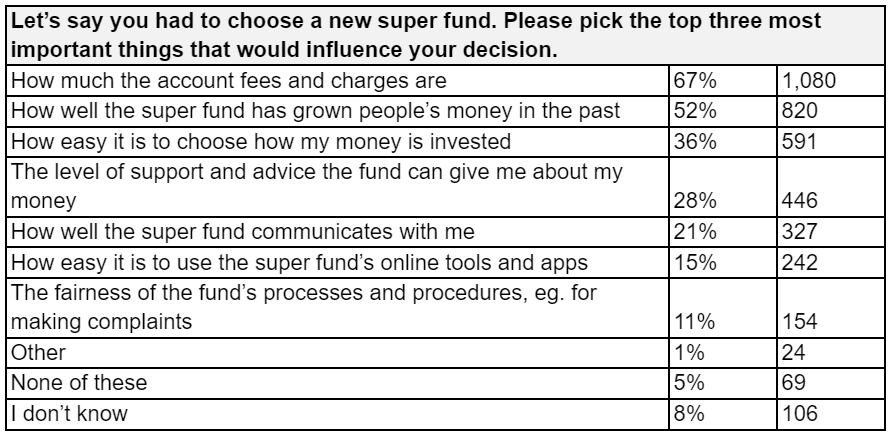
Attitudes and expectations
The vast majority of people (85%) felt that super funds should have to demonstrate they are investing people’s money well, and most (78%) thought poor performers should be disqualified from the system.
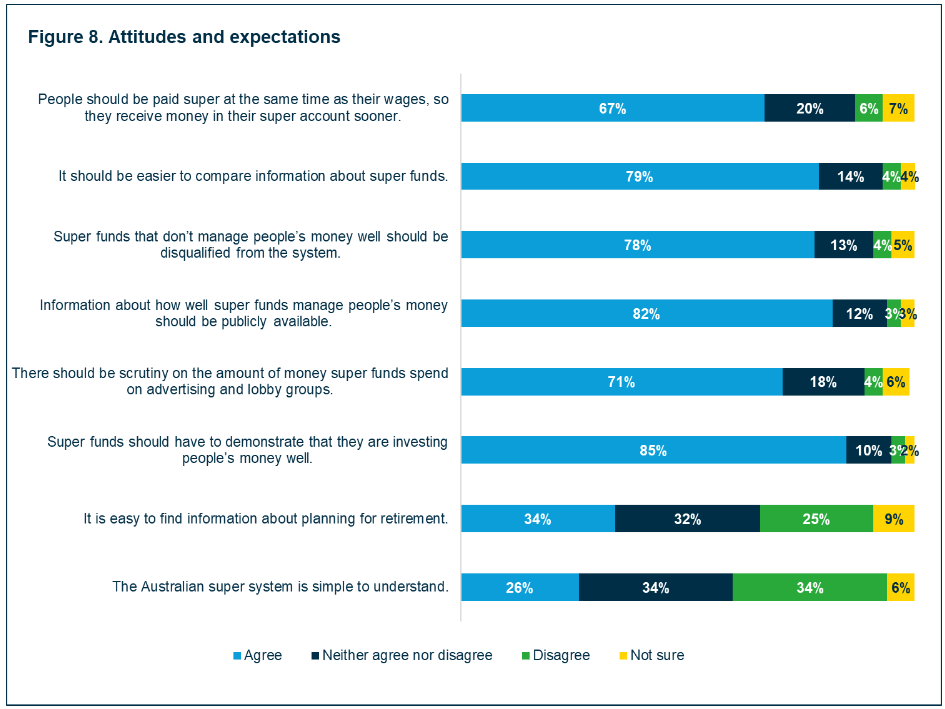
Question: Please let us know to what extent you agree or disagree with these statements. n=1,572
Interestingly, people over 50 were significantly less likely to think the super system is simple to understand (20% agreed) compared to people under 50 (30% agreed). 16% of people who were retired felt that the super system was easy to understand, compared to 26% overall.
Participants were asked how much they expected they would need in super to last them through retirement. Predictably, there was a strong correlation between income level and expected retirement savings needs. 18% of people overall were not sure how much they would need in super. Interestingly, this proportion increased with age – 11% of people aged 18-34 weren’t sure how much they’d need, while 25% of people aged 50-64 weren’t sure how much they’d need.
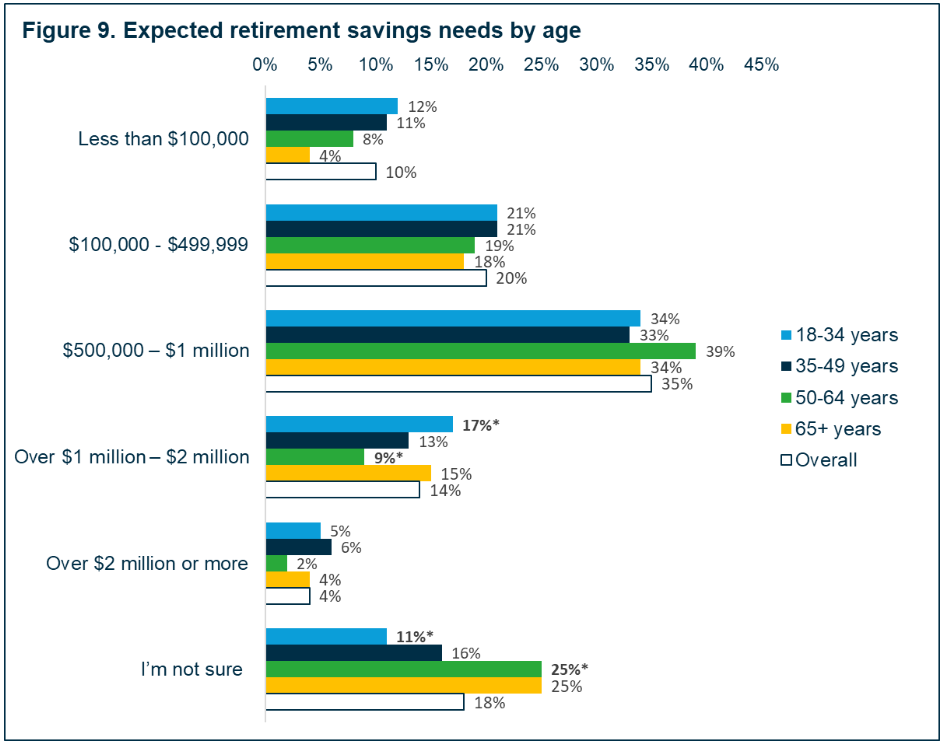
Question: About how much do you expect you will need in super to last you throughout your retirement? Your best estimate is fine. n=1,477.
* = statistical significance.
Knowledge
Consistent with findings in other Australian financial literacy studies, people’s knowledge of the superannuation system varied and was strongly correlated with age, gender, education, and income. Our survey used some knowledge test questions that are identical to or closely resembling those asked in the Productivity Commission’s 2018 survey of superannuation fund members. Where there is comparable data, we have indicated whether the success rate was higher or lower than the Productivity Commission’s findings.
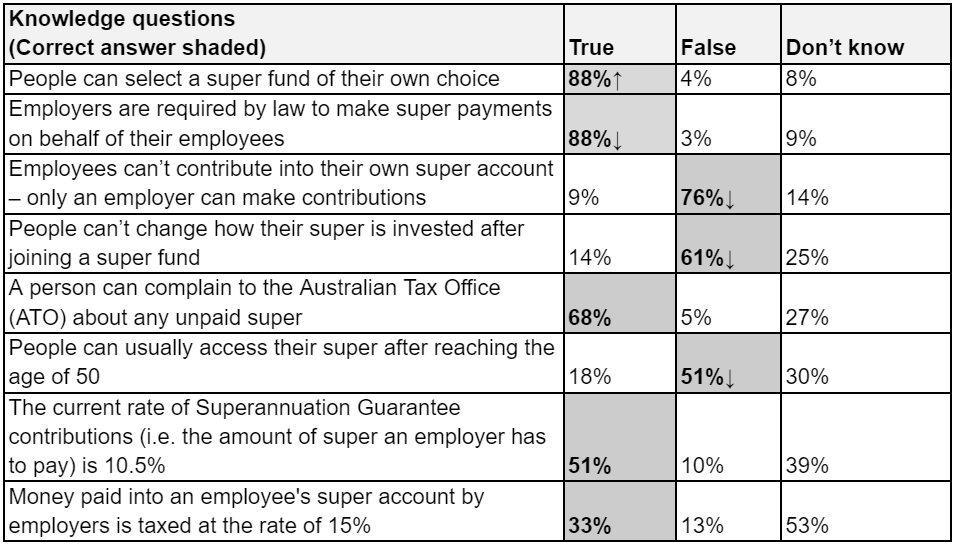
Question: Read each of the statements below, and indicate whether you think they are true or false. n=1,572
Appendix
Descriptive statistics
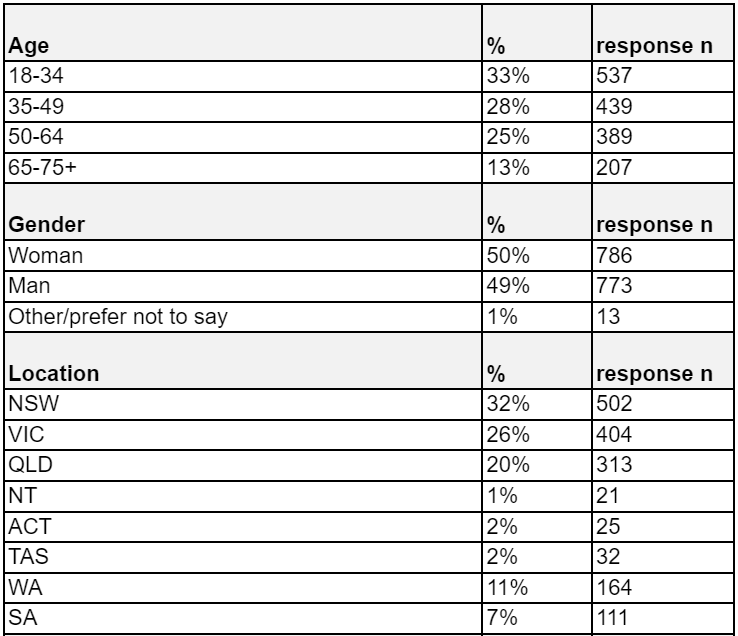
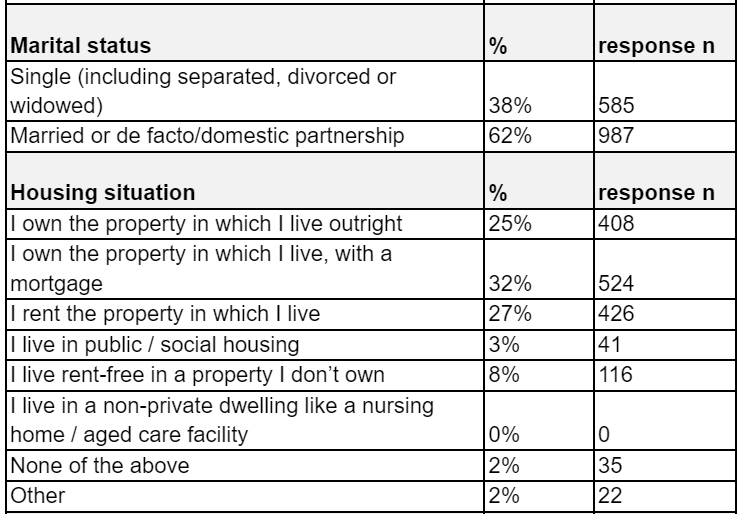

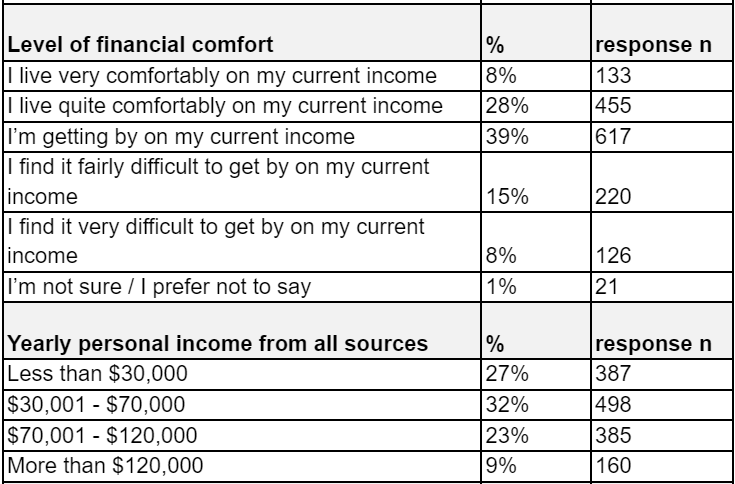
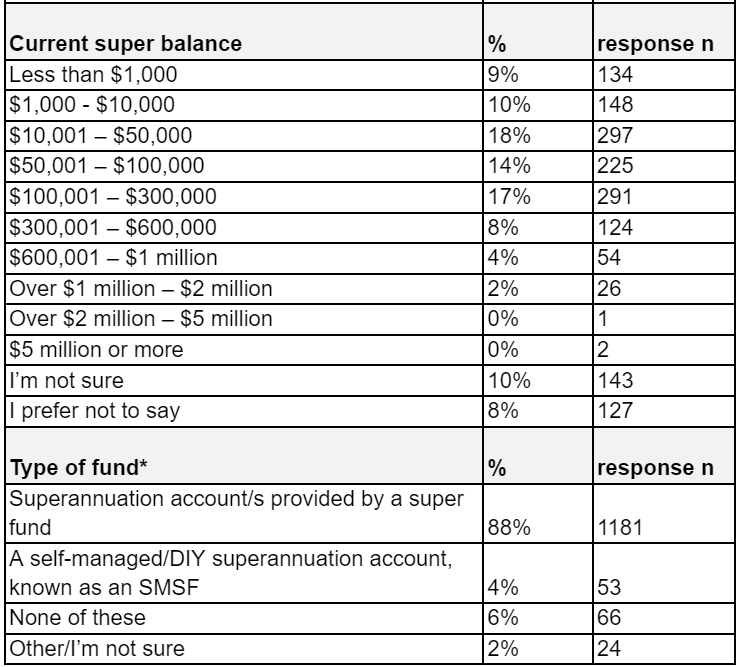
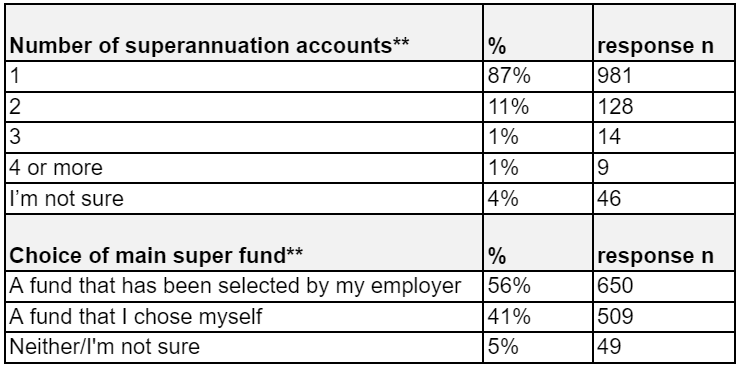
*Respondent sample does not include people in the retirement phase.
**Respondent sample includes people that indicated they had at least one account provided by a super fund. It does not include those with self-managed super funds, those without super or who weren’t sure if they had it, and those in the retirement/pension phase.
Technical notes
Our survey was delivered online via survey panel provider the Online Research Unit, and respondents were financially compensated for their time. While our weighting approach ensures broad representativeness of the Australian population, it is important to note that online survey respondents manually opt in to participation. This means our survey does not rely on a random sample, and this unavoidably impacts the replicability of our results. To strengthen the quality of our data, respondents who took very little time to undertake the survey were removed from the sample, as were those who were clearly satisficing (identified where responses were anomalous).
As indicated, all percentages used in this report have been weighted to be nationally representative on the basis of age, gender, location, and education. In some questions, weighted percentages do not add up to 100% due to rounding or multiple responses.
This research was supported by a philanthropic grant from Ecstra Foundation. Ecstra is committed to building the financial wellbeing of Australians within a fair financial system.
1Respondents’ personal income levels were skewed slightly wealthier than the general population, but weighting on the basis of income was not possible with our sample. Education has been included as a weighted factor to rebalance any skew.
3Ibid.

